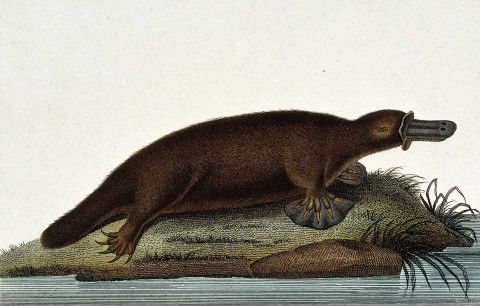
The platypus has a distinctive linear pattern of mucous sensory glands on its bill, whereas the short-beaked echidna has a sensory gland hot spot on its beak tip. The platypus and echidnas have very different distributions of sensory glands and mechanoreceptors in their bills or beaks. Treatment is symptomatic and requires medical attention for pain relief functional impairment of the affected envenomation area can also persist and requires medical monitoring. The envenomation is also associated with an extended hyperalgesia. The toxin is a C-type natriuretic peptide, and has been associated with calcium-dependent nociceptor action. The pain is associated with mast cell degeneration.

Although the defensin-like proteins are not lethal to humans, victims experience such excruciating pain that they may become incapacitated. Three of these proteins are unique to the platypus. The ankle spurs of male platypuses produce a venom comprised of defensin-like proteins, nerve growth factor, and natriuretic peptides. Platypuses do not have teeth, but the males are venomous, with stingers on their rear feet. The platypus has webbed feet, a large duck-billed snout, and a beaverlike tail. The platypus is a monotreme mammal found in Australia and Tasmania, and is one of the very few venomous mammals.

Broderick, in Encyclopedia of Toxicology (Third Edition), 2014 Platypus Introduction


 0 kommentar(er)
0 kommentar(er)
